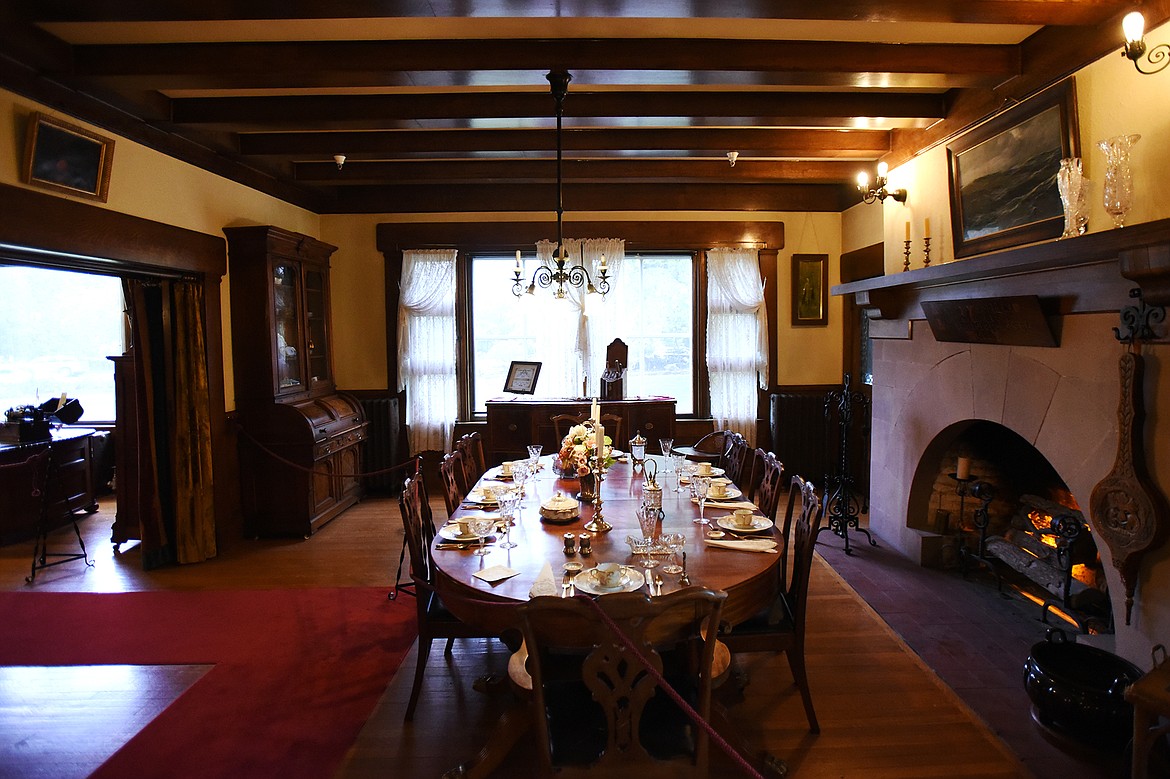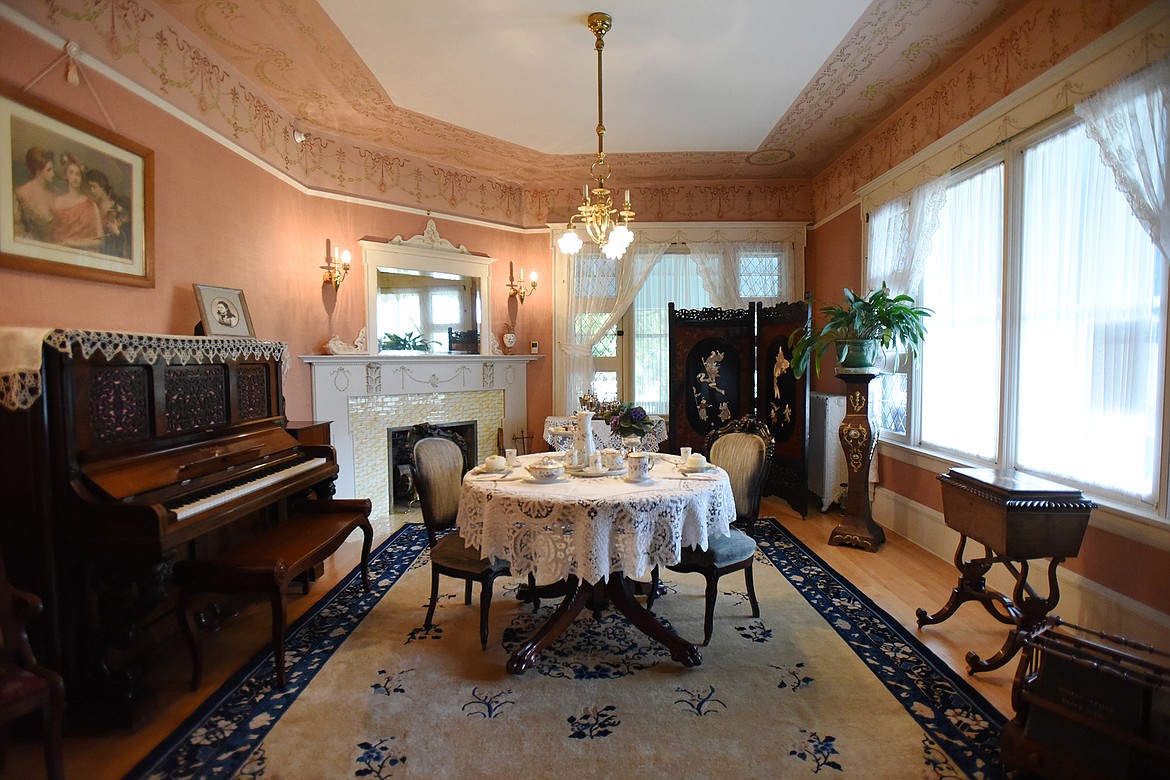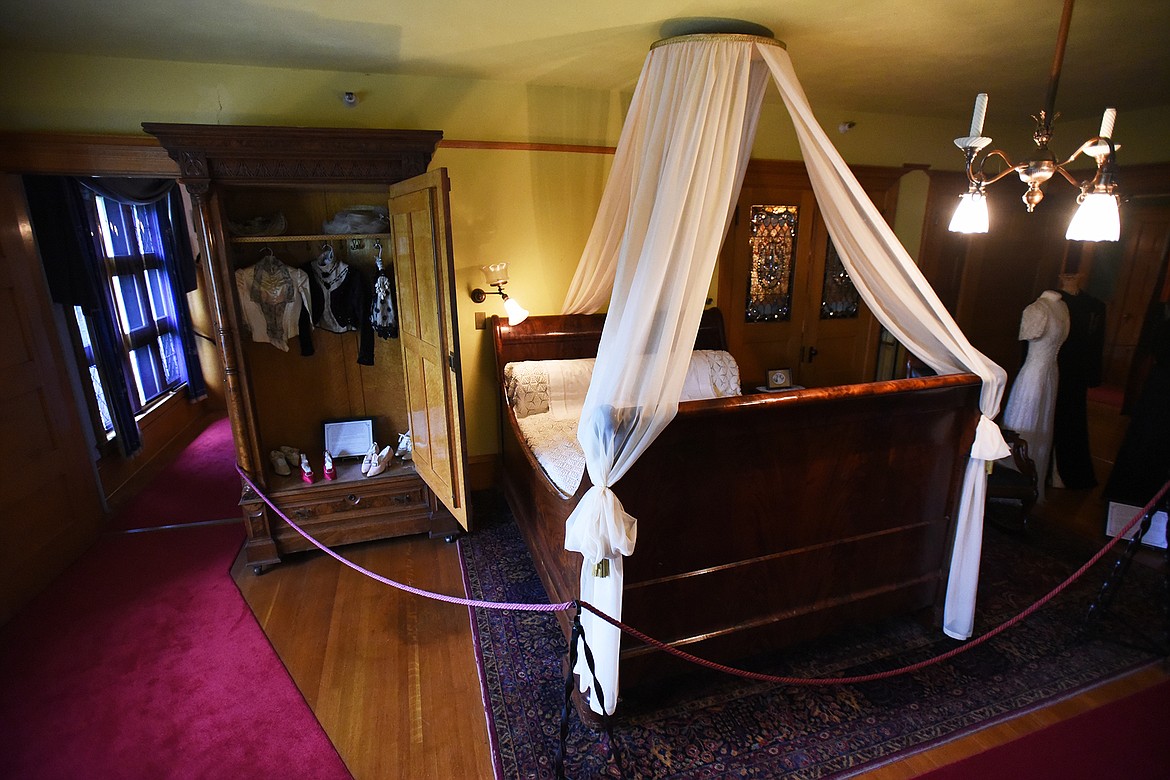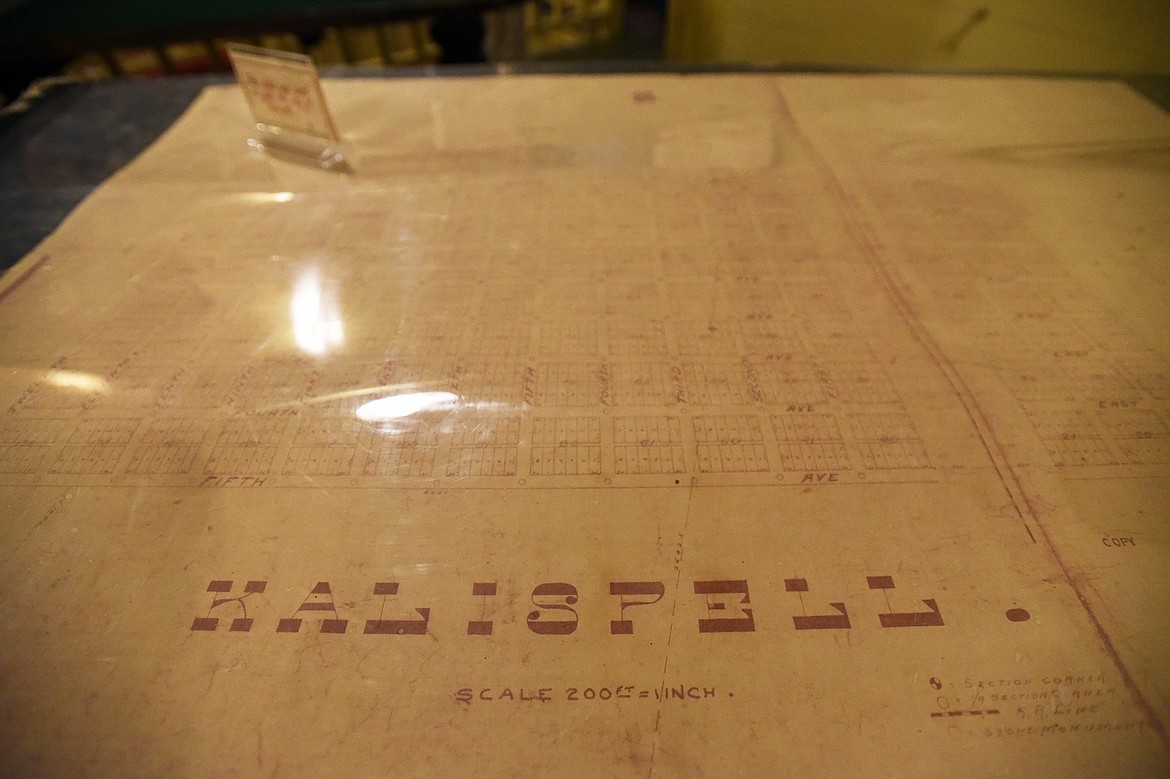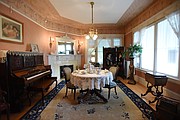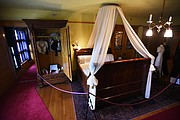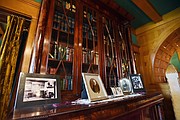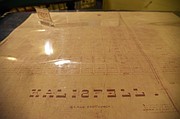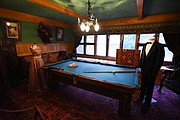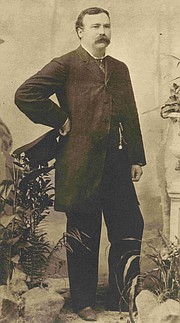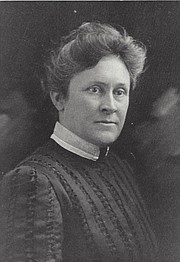Celebrating the Conrad legacy
Kalispell’s beloved Conrad Mansion celebrated a milestone last month, crossing the threshold of its 125th year on Sept. 25.
The Victorian home stands as a solid sentinel to Charles E. Conrad, who in 1891 founded a town at the site of the new Great Northern Railway division point — Kalispell.
The love story of Charles and Alicia Conrad, whose home has become a lasting landmark to the Conrad legacy, began shortly after the Civil War ended and the South was struggling during the Reconstruction era.
In 1868, two brothers, Charles E. Conrad and William G. Conrad, who as very young teens both fought in the Civil War, left their family’s plantation home in Virginia to find their fortunes westward. The two eldest of 13 children traveled 3,175 miles by steamboat from St. Louis up the Missouri, landing in Fort Benton, Montana Territory. Then known as the “birthplace of Montana” and the “Chicago of the Plains,” Fort Benton at that time was the center of commerce for the Northwest Territories.
The Conrad brothers soon established themselves as successful businessmen, overseeing shipments in the pre-railroad era by wagon train and steamboat of all manner of goods — furs, timber, cattle, buffalo hides and provisions — working for the great mercantile firm of the day, I.G. Baker & Co., supplying Army posts, mining camps and the tribes across the West and Canada, reaching to the East Coast, Europe and St. Petersburg, Russia. At age 28, just 10 years after arriving in Fort Benton, Charles E. Conrad became the owner of I.G. Baker & Co.
In 1879, 18-year old Alicia “Lettie” Davenport Stanford immigrated with her mother following her father’s death and the family’s subsequent bankruptcy, from their home in Halifax, Nova Scotia, to Fort Benton — a three-month trip aboard the steamer Montana — to join her older brother James Stanford who, at 16, had become a charter member the Northwest Canadian Mounted police. When she greeted her brother on the Fort Benton dock he introduced her to his friend, Charles E. Conrad.
A little more than a year later Lettie and Charles were married, on Jan. 4, 1881; the temperature was minus 31. That didn’t discourage the newlyweds from launching out on a 10-month honeymoon, first by sleigh to Helena with Lettie snuggled up in plush furs; then by stagecoach to Ogden, Utah Territory; then by train to visit the bustling East Coast cities and on to Halifax where Charles met his wife’s seven stepsisters.
The Conrads’ return journey culminated in visiting Charles’ boyhood home in Virginia. Along the way the couple acquired handsome furniture and goods to furnish their new home in Fort Benton, a town that at the time was as well-appointed as any city back East, or Europe for that matter. They were also showered with wedding gifts that took six pages to list.
Although the Conrads had plans to move to Spokane, on a trip through the Flathead Valley to visit Alicia’s brother they boarded the steamboat Klondike in Polson, heading up Flathead Lake for Demersville. By the time they’d arrived they had fallen in love with the lake’s pristine waters and forested shores, and with the Flathead Valley.
Charles knew the coming of the Great Northern Railway to the Flathead Valley guaranteed a burgeoning economy. He struck a deal with his friend, railroad magnate James J. Hill, and the Conrads moved to the Flathead instead to establish a new community in the rough and tumble Montana territory.
On his many business trips, Charles would stop at the Allards hostelry in Ravalli and he’d become endeared to its cook, Mrs. Larivee. On one visit he asked her to suggest a name for the new town.
“Kalispell,” she replied, after the local American Indian tribe long respected as far back as the Lewis and Clark Expedition.
The Conrads hired the noted Spokane architect Kirkland Cutter, who also designed and built Spokane’s Davenport Hotel, to design and build their new Kalispell home.
THE CONRAD Mansion, built on the Conrads’ 78-acre estate, stands as one of the most outstanding examples of Victorian elegance and period architecture in the Pacific Northwest. Now on the National Register of Historic Places, the home was designed and built by noted Spokane architect Kirtland Cutter, who also designed Spokane’s Davenport Hotel. Its 26 fully furnished rooms spanning 13,000 square feet were constructed in the Norman-style and built between 1892 and 1895. The Conrad family, with children Charley, Cate and Lettie, moved into their lavish home in time to celebrate Thanksgiving that year.
Cutter installed gaslights in the home but, with an eye toward the future, also wired them for electricity, anticipating its arrival in the Flathead Valley and, from the day the family moved in, the lights were powered by way of the Swan River Dam in Bigfork.
Other modern conveniences built into the mansion were indoor plumbing, including flushing toilets and baths, though many guests of the day still preferred chamber pots; an elevator used by both the servants and family; a dumbwaiter, radiators and a galvanized pipe sprinkling system for the grounds.
The home is furnished with the many valuable antiques the Conrads collected, their love for them apparent throughout. The Chippendale dining room set, bought for $250, can seat 20 to 26 guests. When very young, their youngest child Alicia carved her name on it with a butter knife and her faint childhood scrawl can still be seen.
The doors feature European mullioned glass and the chandeliers are Waterford cut glass.
Today, 90% of the mansion’s furnishings are original.
The home was expansively designed to accommodate extended family (both grandmothers lived there) as well as entertain guests with fancy balls and charitable children’s parties — with the Great Hall as the centerpiece. It has an entire wing devoted to guest bedrooms featuring walk-in closets and private baths; one has a private office, which was used by President Theodore Roosevelt, Charles M. Russell and James J. Hill, all friends of Charles.
The house was staffed by 24 servants, many of them young Norwegian women seeking American husbands. The Conrads also helped their head caretaker Hori arrange for workers from his native Japan to work in the home while learning English. Once they understood English, they could go on to the East Coast to obtain a formal education. The Conrads provided a daily meal to all their employees who returned to their own homes at day’s end.
THE GROWTH and success of Kalispell is deeply rooted in the Conrad family legacy. The land the family donated to the city in 1910 that became Woodland Park had at one time been stocked with elk, deer and peacocks.
The Conrads also provided for the building of the C.E. Conrad Memorial Cemetery into perpetuity. (Prior to his marriage to Alicia, Charles had a son with his first wife, “Sings in the Middle,” a Blackfeet Indian princess).
In the 1920s the property directly across Woodland Avenue, which had been the carriage house and stables was redesigned into five smaller homes. The same stone wall that encompasses the mansion still graces the front lawns of these homes.
The Conrad National Bank, now First Interstate Bank, was founded in 1892 by Charles E. Conrad.
Conrad also played a significant role in the preservation of the American bison with his purchase of the herd belonging to the widow of Charles A. Allard, a Flathead Reservation rancher. He pastured his herd on Wild Horse Island for one year, then wintered them in Creston and summered them in Smith Valley, stopping on their annual migrations at what became known as Buffalo Hill in Kalispell. Conrad’s herd would later become the basis for the National Bison Range herd in Moiese. The mount of the Conrads’ favorite bull, Kalispell Chief, who died of natural causes at age 32, hangs in the Conrad Mansion’s Billiards Room.
Though Charles Conrad, at 6 feet 4, was an imposing gentleman, he battled, and eventually succumbed to at age 52, both diabetes and tuberculosis. He had lived in his well-appointed home a mere seven years. His beloved wife Lettie continued to successfully manage their estate and wealth until her death in 1923.
The mansion remained in the Conrad family until 1974 when Alicia Conrad Campbell, the youngest of the four Conrad children, and the only one able to successfully maintain ownership, donated her ancestral home to the city of Kalispell. She died in 1981, a century after her parents, Charles E. and Alicia Davenport Stanford married.
In their day, the Conrads were well-known for their legendary hospitality and generosity. Today their legend thrives in the city of Kalispell, a community forever indebted to them for their long-lasting generosity.
Community Editor Carol Marino may be reached at 758-4440 or community@dailyinterlake.com.
125th anniversary
The Conrad Mansion will be celebrating its 125th anniversary by offering new tours and events throughout 2020 and 2021, exploring the history and showcasing the unique stories of the Conrad family and life in Kalispell’s early days.
Here is a look at upcoming events:
A Stroll in the Garden Tour — The mansion’s grounds have their own unique history. Hear never-before told stories while strolling through the gardens.
— 5:30 to 6:15 p.m. every Tuesday through October, rain or shine; $10 suggestion donation
Lettie Conrad & the Wild West Tour — This tour honors Kalispell’s founding mother, an Edwardian woman’s life in the wild west of early Montana
— 5:30 to 7 p.m. every Monday; and 4-5:30 p.m. the second Saturday of every month; $20 per person, limited to 10 people per tour
The Conrads Go to a Ball: Clothing Exhibit Tour — Historic clothing tour provides an up-close viewing of ball gowns and evening wear from the 1890s to 1960s while touring the first and second floors of the mansion.
— 5:30 to 7 p.m. every Thursday through November; $15 per person, limited to 10 people per tour
The Conrad Mansion is located at 330 Woodland Ave. For tickets and more information visit www.conradmansion.com or call 406-755-2166.
References
“Half Interest in a Silver Dollar: The Saga of Charles E. Conrad” by James E. Murphy; Mountain Press, 1983
“Sagas of Our Pioneers” Compiled by the office of the Flathead County Superintendents of Schools, 1956
“Looking Back: A Pictorial History of the Flathead Valley, Montana” by Kathryn L. McKay: Northwest Montana Historical Society, 1997
“Montana History Weekends,” by Dave Conklin; Globe Pequot Press, 2002


